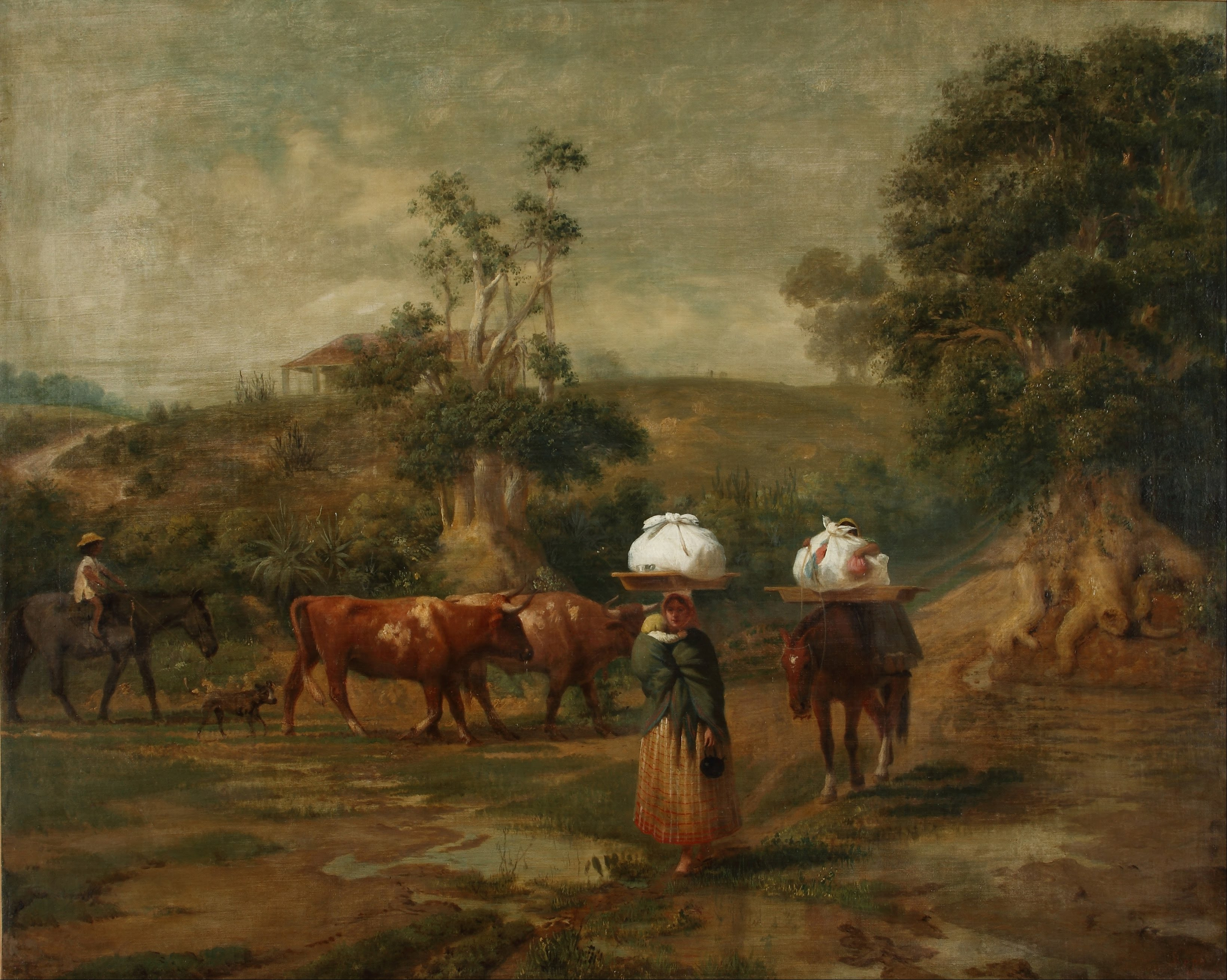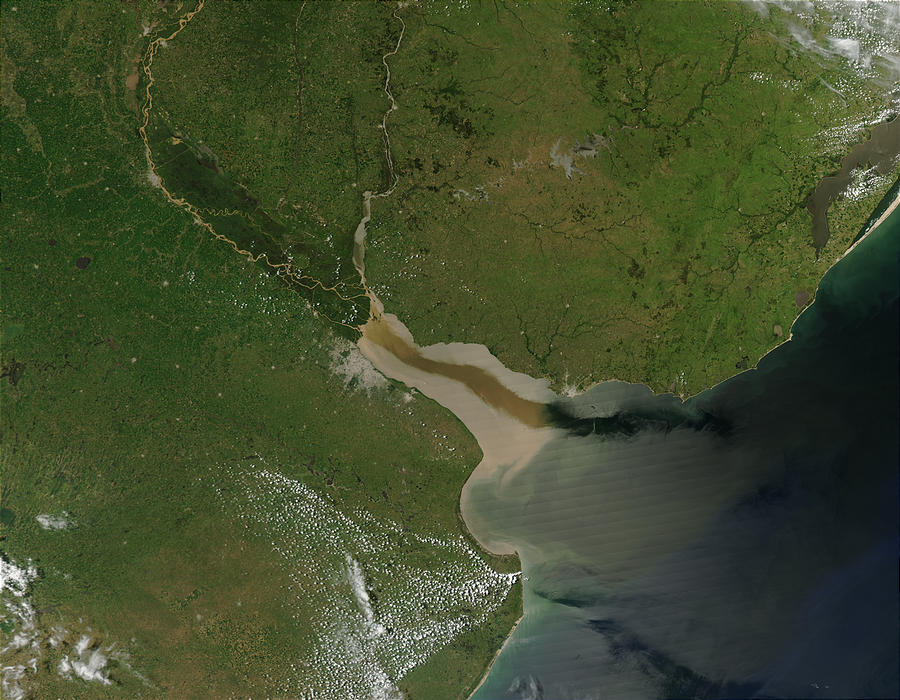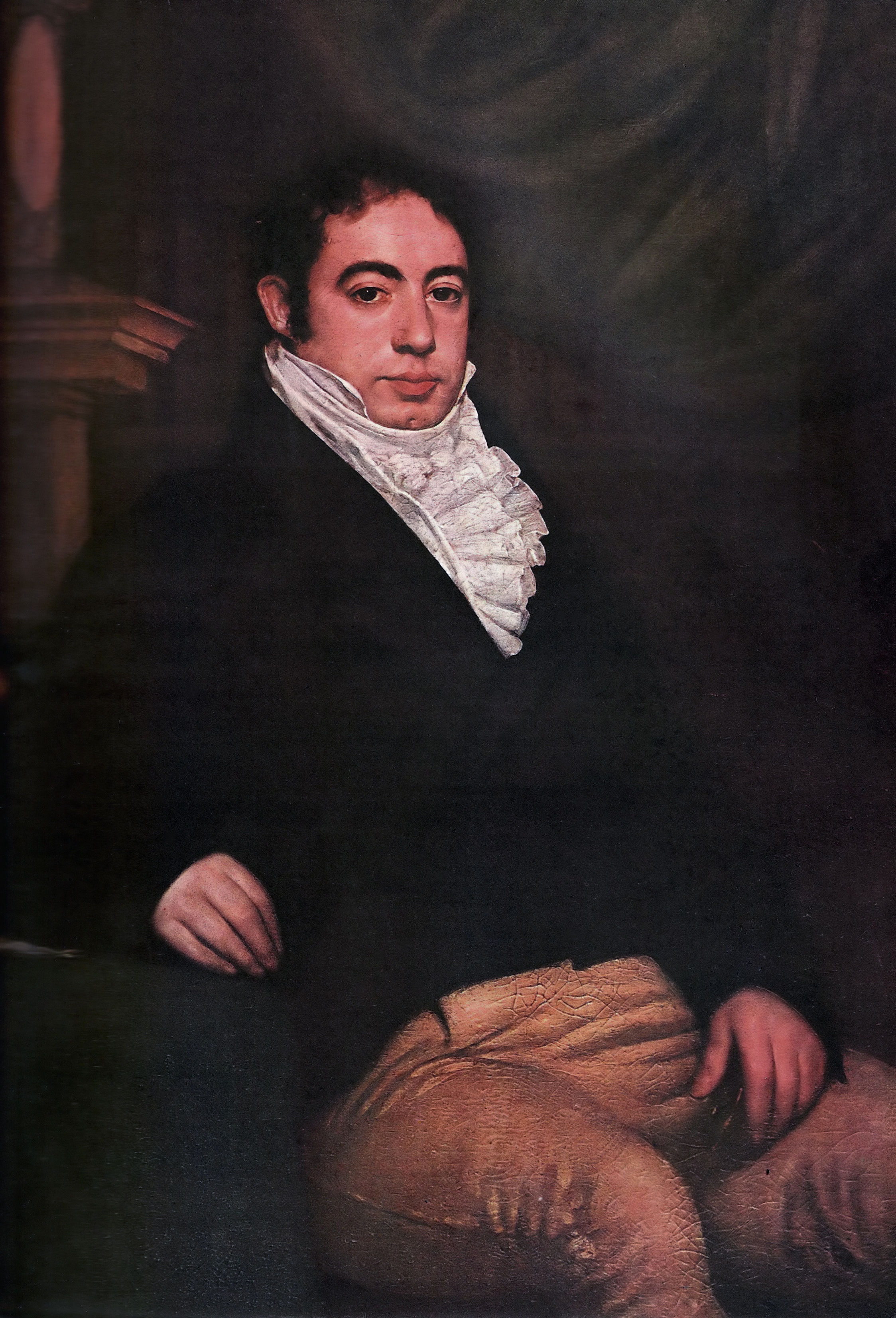|
Prilidiano Pueyrredón
Prilidiano Pueyrredón (January 24, 1823 – November 3, 1870) was an Argentine painter, architect and engineer. One of the country's first prominent painters, he was known for his costumbrist sensibility and preference for everyday themes. Early life Pueyrredón was the only son of Juan Martín de Pueyrredón, then the Supreme Director of the United Provinces of the Río de la Plata, and María Calixta Tellechea y Caviedes, an aristocrat. He completed his primary education at the upper-class Colegio de la Independencia. In 1835 his family relocated to Europe, where he completed his education. He spent the school year in Paris and summers in Cádiz, where his father owned a business importing Argentine leather. Six years later, as relations between France and Argentina suffered owing to the refusal of Juan Manuel de Rosas to grant commercial privileges to ships of French origin—a matter which would not be resolved until the Battle of Vuelta de Obligado a few years la ... [...More Info...] [...Related Items...] OR: [Wikipedia] [Google] [Baidu] |
Argentine Confederation
The Argentine Confederation (Spanish: ''Confederación Argentina'') was the last predecessor state of modern Argentina; its name is still one of the official names of the country according to the Argentine Constitution, Article 35. It was the name of the country from 1831 to 1852, when the provinces were organized as a confederation without a head of state. The governor of Buenos Aires Province (Juan Manuel de Rosas during most of the period) managed foreign relations during this time. Under his rule, the Argentine Confederation engaged in conflicts with Brazil, Bolivia, Uruguay, France and the United Kingdom, as well as other Argentine factions during the Argentine Civil Wars. Rosas was ousted from power in 1852 by Justo José de Urquiza, after the battle of Caseros. Urquiza convened the 1853 Constituent Assembly to write a national constitution. Buenos Aires resisted Urquiza and seceded from the Confederation in 1852, becoming the State of Buenos Aires; the province would ... [...More Info...] [...Related Items...] OR: [Wikipedia] [Google] [Baidu] |
Río De La Plata
The Río de la Plata (; ), also called the River Plate or La Plata River in English, is the estuary formed by the confluence of the Uruguay River and the Paraná River at Punta Gorda, Colonia, Punta Gorda. It empties into the Atlantic Ocean and forms a funnel-shaped indentation on the southeastern coastline of South America. Depending on the geographer, the Río de la Plata may be considered a river, an estuary, a gulf, or a marginal sea. If considered a river, it is the widest in the world, with a maximum width of . The river is about long and widens from about at its source to about at its mouth. It forms part of Argentina–Uruguay border, the border between Argentina and Uruguay. The name Río de la Plata is also used to refer to the populations along the estuary, especially the main Port city, port cities of Buenos Aires and Montevideo, where Rioplatense Spanish is spoken and tango culture developed. The coasts of the river are the most densely populated areas of Urugua ... [...More Info...] [...Related Items...] OR: [Wikipedia] [Google] [Baidu] |
Pampas
The Pampas (; from Quechua 'plain'), also known as the Pampas Plain, are fertile South American low grasslands that cover more than and include the Argentine provinces of Buenos Aires, La Pampa, Santa Fe, Entre Ríos, and Córdoba; all of Uruguay; and Brazil's southernmost state, Rio Grande do Sul. The vast plains are a natural region, interrupted only by the low Ventana and Tandil hills, near Bahía Blanca and Tandil (Argentina), with a height of and , respectively. This ecoregion has been changed by humans, especially since the release of animals like cattle, pigs, and especially sheep onto these plains. The climate is temperate, with precipitation of that is more or less evenly distributed throughout the year, making the soils appropriate for agriculture. The area is also one of the distinct physiography provinces of the larger Paraná–Paraguay plain division. It is considered that the limit of the Pampas plain is to the north with the Atlantic Forest and the G ... [...More Info...] [...Related Items...] OR: [Wikipedia] [Google] [Baidu] |
Romanticism
Romanticism (also known as the Romantic movement or Romantic era) was an artistic and intellectual movement that originated in Europe towards the end of the 18th century. The purpose of the movement was to advocate for the importance of subjectivity and objectivity (philosophy), subjectivity, imagination, and appreciation of nature in society and culture in response to the Age of Enlightenment and the Industrial Revolution. Romanticists rejected the social conventions of the time in favour of a moral outlook known as individualism. They argued that passion (emotion), passion and intuition were crucial to understanding the world, and that beauty is more than merely an classicism, affair of form, but rather something that evokes a strong emotional response. With this philosophical foundation, the Romanticists elevated several key themes to which they were deeply committed: a Reverence (emotion), reverence for nature and the supernatural, nostalgia, an idealization of the past as ... [...More Info...] [...Related Items...] OR: [Wikipedia] [Google] [Baidu] |
Gaucho
A gaucho () or gaúcho () is a skilled horseman, reputed to be brave and unruly. The figure of the gaucho is a folk symbol of Argentina, Paraguay, Uruguay, Rio Grande do Sul in Brazil, the southern part of Bolivia, and the south of Chilean Patagonia. Gauchos became greatly admired and renowned in legend, folklore, and literature and became an important part of their regional cultural tradition. Beginning late in the 19th century, after the heyday of the gauchos, they were celebrated by South American writers. According to the , in its historical sense a gaucho was a "mestizo who, in the 18th and 19th centuries, inhabited Argentina, Uruguay, and Rio Grande do Sul in Brazil, and was a migratory horseman, and adept in cattle work". In Argentina and Uruguay today, gaucho can refer to any "country person, experienced in traditional livestock farming". Because historical gauchos were reputed to be brave, if unruly, the word is also applied metaphorically to mean "noble, brave and genero ... [...More Info...] [...Related Items...] OR: [Wikipedia] [Google] [Baidu] |
President Of Argentina
The president of Argentina, officially known as the president of the Argentine Nation, is both head of state and head of government of Argentina. Under Constitution of Argentina, the national constitution, the president is also the Head of government, chief executive of the Government of Argentina, federal government and commander-in-chief of the Armed Forces of the Argentine Republic, armed forces. Throughout Argentine history, the List of heads of state of Argentina , office of head of state has undergone many changes, both in its title as in its features and powers. The current president Javier Milei was sworn into office on 10 December 2023. He succeeded Alberto Fernández. The constitution of Argentina, along with several constitutional amendments, establishes the requirements, powers, and responsibilities of the president, the term of office and the method of election. History The origins of Argentina as a nation can be traced to 1776, when it was separated by King Ch ... [...More Info...] [...Related Items...] OR: [Wikipedia] [Google] [Baidu] |
Olivos, Buenos Aires
Olivos is a neighborhood in Vicente López Partido, Buenos Aires Province, Argentina. It is bordered to the south by Vicente López neighborhood and Florida; to the east by the River Plate; to the north by La Lucila and Martínez, and to the west by Munro. Olivos is the municipal seat of Vicente López Partido, and it is also seat of the Argentina presidencial residence. History A well-known stop along the Buenos Aires- Córdoba trade route for much of the 18th century, one of the area's first landowners, Domingo de Acassuso, began cultivating olive trees around 1720 and the spot was officially named ''Olivos'' ("Olive Trees") on 19 February 1770. Much of the area was later purchased by Viceroy Antonio de Olaguer y Feliú and by a German immigrant, Hernán Wineberg, who sold a large tract in 1860 for the construction of the Ferrocarril Central Argentino through the area. The 1863 inaugural of the local railway station, one of Argentina's first, began attracting homeow ... [...More Info...] [...Related Items...] OR: [Wikipedia] [Google] [Baidu] |
Miguel De Azcuénaga
Brigadier Miguel de Azcuénaga (4 June 1754 – 19 December 1833) was an Argentine army officer and politician. Educated in Spain, at the University of Seville, Azcuénaga began his military career in the Viceroyalty of the Río de la Plata and became a member of the Primera Junta, the first autonomous government of modern Argentina. He was shortly exiled because of his support to the minister Mariano Moreno, and returned to Buenos Aires when the First Triumvirate replaced the Junta. He held several offices since then, most notably being the first Governor intendant of Buenos Aires after the May Revolution. He died at his country house (the modern Quinta de Olivos) in 1833. Biography Viceroyalty of the Río de la Plata Miguel de Azcuénaga was born in Buenos Aires on 4 June 1754. He was the son of Vicente de Azcuénaga Iturbe, a Spanish businessman from the Basque province of Biscay, and María Rosa de Basavilbaso y Urtubia, from Buenos Aires. The Azcuénaga-Basavilbaso ... [...More Info...] [...Related Items...] OR: [Wikipedia] [Google] [Baidu] |
Barracas, Buenos Aires
Barracas is a ''Barrios of Buenos Aires, barrio'', or district, in the southeast part of the city of Buenos Aires, Argentina. It is located between the railroad of Ferrocarril General Manuel Belgrano and the Riachuelo River, and the streets ''Regimiento de Patricios'', ''Defensa'', ''Caseros'', ''Vélez Sársfield'', ''Amancio Alcorta'', ''Lafayette'', and ''Lavardén''. The name Barracas comes from the word ''barraca'', which refers to a temporary construction of houses using rudimentary materials. History In the 18th century, "Barracas" began to grow on the banks of the Riachuelo River, becoming a slave quarter, as well as an area for leather Tanning (leather), tanneries, and abattoirs. On March 24, 1791, a bridge was built that gave the neighborhood an important strategic value during the British invasions of the Río de la Plata. In 1858, part of this bridge was destroyed by flood and was replaced by a new iron bridge in 1871. There were a series of problems with this new b ... [...More Info...] [...Related Items...] OR: [Wikipedia] [Google] [Baidu] |
Pueyrredón Bridge
The Pueyrredón Bridge (officially called Prilidiano Pueyrredón Bridge) is a bascule bridge in Buenos Aires, Argentina. It connects Vieytes street of Barracas, Buenos Aires, Barracas neighborhood with Bartolomé Mitre Avenue in Avellaneda Partido, crossing over Matanza River (popularly known as ''Riachuelo''). The bridge carries vehicular, bicycle, and pedestrian traffic between both points. It was named after painter and architect Prilidiano Pueyrredón, one of the country's first prominent artists. History Puente de Gálvez Since the 17th century the only way to cross the ''Riachuelo'' was by canoe. Some of the points to cross the river were Paso Pedro Salazar, named after a neighbor owner of a ranch near there. In 1653 the Cabildo of Buenos Aires ruled the crossing by canoe for public use, becoming the first crossing to connect both margins. It would be known as "Paso de la Canoa" since then, and was the place where the first bridge over Riachuelo would be built years la ... [...More Info...] [...Related Items...] OR: [Wikipedia] [Google] [Baidu] |
Casa Rosada
The ''Casa Rosada'' (), , is the president of the Argentine Republic's official workplace, located in Buenos Aires. The palatial mansion is known officially as ''Casa de Gobierno'' ("House of Government" or "Government House"). Normally, the president lives at the Quinta de Olivos, the president of Argentina's official residence, located in Olivos, Greater Buenos Aires. The characteristic color of the Casa Rosada is baby pink, and it is considered one of the most emblematic buildings in Buenos Aires. The building also houses a museum, which contains objects relating to former presidents of Argentina. It has been declared a National Historic Monument of Argentina. History The ''Casa Rosada'' sits at the eastern end of the Plaza de Mayo, a large square which since the 1580 foundation of Buenos Aires has been surrounded by many of the most important political institutions of the city and of Argentina. The site, originally at the shoreline of the Río de la Plata, was first occupie ... [...More Info...] [...Related Items...] OR: [Wikipedia] [Google] [Baidu] |







